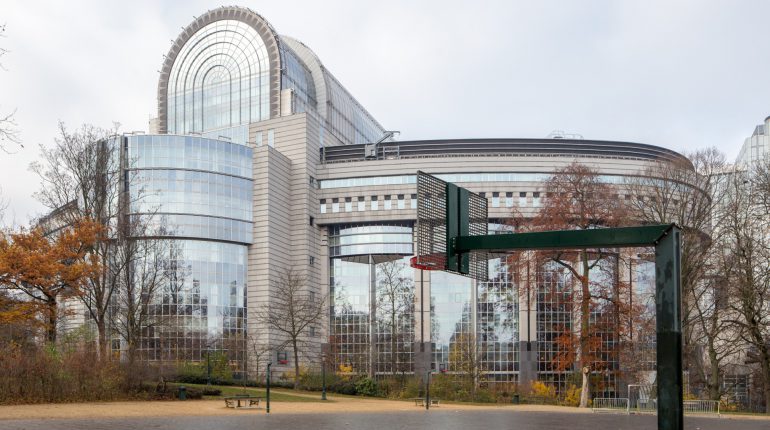The European Parliament, the Paul-Henri Spaak building or the “Caprice des Dieux”, there are many ways to name this European symbol located in the heart of the Quartier Léopold. A postmodern building built in 1993, it now houses the hemicycle that hosts the plenary sessions of European parliamentarians.
This illustrious building now needs a complete overhaul. This is why the European Parliament recently launched a competition for a sketch design aimed at redefining the external and internal volumes as well as the integration of the building into the urban environment, the relationships between functions but also between the different users. The program includes, of course, the hemicycle but also the parliamentary committee’s rooms, spaces for citizens, for the media and for the organization of cultural activities. Particular attention will be focused on the flexibility of the building, in the short and long term. The European Parliament has set out its environmental ambitions in the form of an Exemplary Charter, but cannot currently choose between renovation or demolition/reconstruction. The impact of re-use, the safety of the structure and the chances of urban improvement are already some of the challenges that seek a clear response through this competition for a sketch design.
This procedure is very specific because it corresponds to the requirements of the European Parliament. A maximum of 25 teams will be invited to submit a sketch for the renewal of the building. The winning design finally chosen by Parliament will be further developed in view of realisation in a subsequent Design & Build procedure. Please know, apart from his/her subcontractors, the winner will not be able to participate in the latter. However, the parliament undertakes to enter into negotiations with the winner for a mission to advise and monitor this subsequent procedure.
Although the building for the European Parliament is a prestigious project, the conditions of access are fairly accessible. Indeed, several architectural firms can very well join forces and form a group which together have the capacity to present three references from the last 10 years whose total area is equal to 120,000 m² minimum and of among which at least one of those projects has been built. An opportunity to reinvent the Parliament building of the European Union in Brussels.
